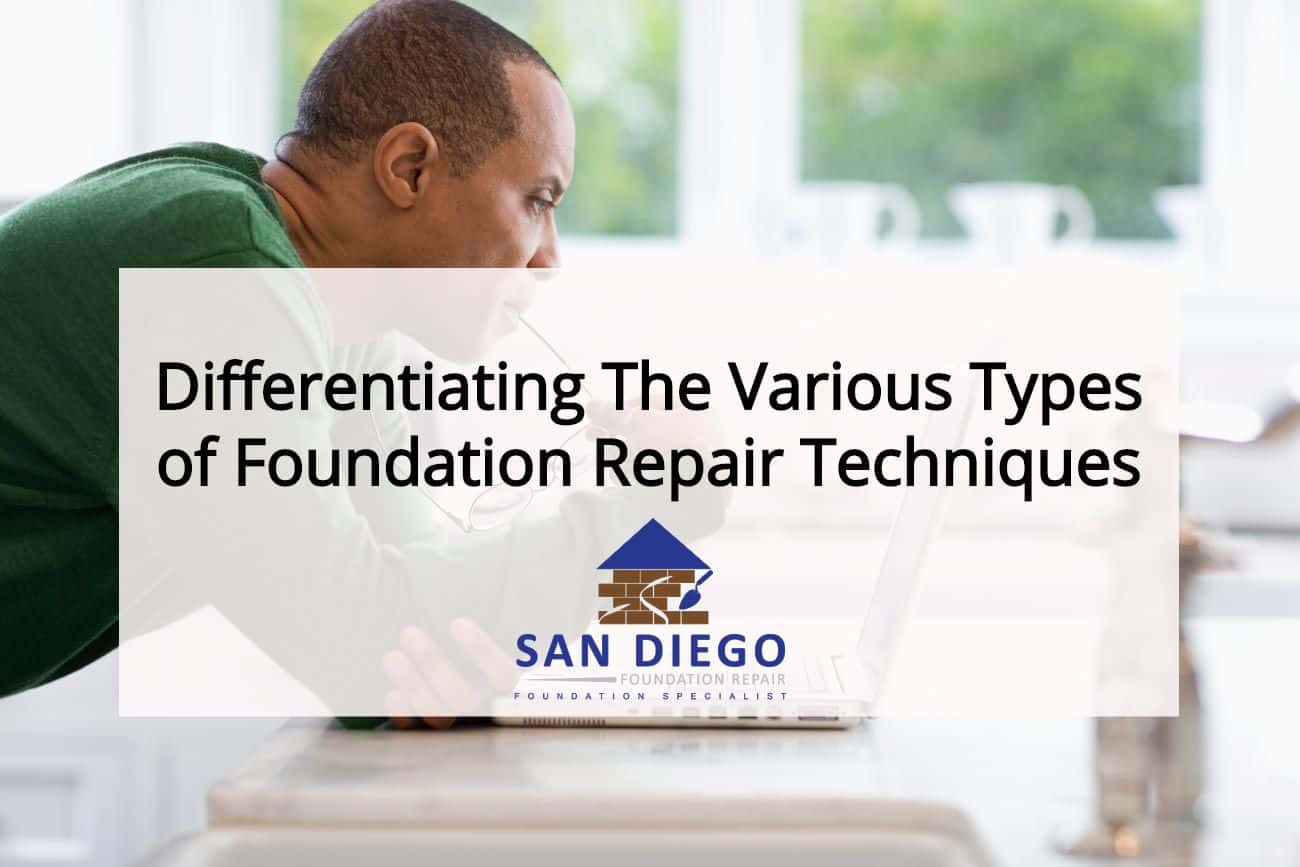Differentiating The Various Types of Foundation Repair Techniques

Different foundation problems require different types of repair. There’s no one-size-fits-all solution in repairing foundation issues of your home or business establishment. It’s therefore important that an expert do an inspection and evaluate what really is the real cause of the problem so that the right foundation repair will be implemented.
There are many telltale signs that can indicate potential foundation damage. You might see some cracks in the walls, floors or ceilings of your property, a bumpy or descending flooring, and separation or misaligned doors or windows.
Any of these visible cues can be caused by several things as well. It can be due to the natural movement of the soil or improper compaction of the soil where the foundation rests. It may also be because of the artificial forces that have been done that led to the foundation distress.
Whatever kind of foundation damage that your property is experiencing, there’s the best solution to repair it. Here are the top four different types of foundation repair that are commonly applied by the service providers.
Slab Jacking
This type of foundation repair is not an easy task and it requires the right expertise to use the specialized tools and equipment needed for the job. It is applied to regain the position of a sunken concrete. The repair process involves pumping the cement mixture and other additives into the drilled holes on the concrete surface using portable equipment.
The pumped concrete mixture serves as the foundation’s new strengthened base and spreads beneath the old slab layer. Instead of replacing the entire structure, slab jacking is much cheaper and doesn’t require intensive preparation and clean up afterward. You can use the repaired area within hours after the job has been done.
Piering or Piling (Steel-pressed, Concrete-pressed, or Bell Bottom Pier)
As the name implies, this foundation repair technique is used to resettle the foundation using steel, concrete or bell bottom piers. While piering or piling is used interchangeably, each method actually differs from one another. Piling is being done by driving piles into the ground where the foundation is while piering is performed through excavation. However, both processes can be treated one and the same, and involve several varieties.
In steel-pressed piling, coated or galvanized steel pipes are used to provide the needed support for the damaged foundation. Steel shaft is being attached to the foundation to regain its strength either by welding or bolting. In the case of concrete pressed piling, holes are drilled onto the structure that requires repair and reinforces it with the new concrete mixture. Whereas the use of bell bottom piers provides good strength to the foundation by preventing the piers from any unwanted movement. The bell-shaped shaft drilled into the structure is reinforced and filled
with concrete.
The Use of Sealants
You’re lucky if you’ve got only some minor cracks because it can be repaired by using masonry patches or sealants. These foundation repair sealers come in various kinds, including epoxy, polyurethane, and hydraulic cement. They are only suitable for minor cracks and requires regular maintenance to last longer. Each of these products differs in terms of the strength and durability they provide in repairing the cracks. You can ask the foundation repair experts which one will work best for your crack problem.
Soil Stabilization
This technique is somehow similar to slab jacking in that voids within the soil layers are being filled with certain chemicals to modify its composition and to provide necessary stabilization. It then makes the soil more stable and stiffer to withstand unwanted movement. While this foundation repair method works, it requires more maintenance and higher technical knowledge to perform.
Each of these foundation repair techniques has its own benefits to provide and choosing which is the best solution for your specific foundation problem requires guidance from the experts.
